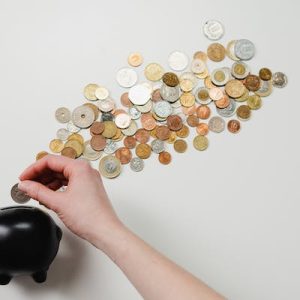A cashless society was once the stuff of science fiction. It is hard to image when living in a world in which every wallet held banknotes and coins, but the movement towards a cashless society has begun and it is fast gaining pace. It might just be that before we know it, we’ll be living in a world of digital currency.
Sweden showing the way
A number of digital currency proponents in Sweden are asking why bank notes should be printed at all in an increasingly high-tech world in which people are more familiar with screens and scanners than paper. Now is the time, they believe, to begin to transition towards digital money.
Catch a bus in a Swedish city and you will need to purchase a prepaid ticket or buy one with a cell phone text message. In fact, there are towns where it is no longer possible to go into a bank and use cash. Of course, this poses a problem for people living in rural areas and the elderly who do not have credit cards.
Interestingly, the Swedish Bankers’ Association says the shrinkage of the cash economy is already making an impact on crime statistics. The number of bank robberies in Sweden plunged from 110 in 2008 to 16 in 2011 — the lowest level since it started keeping records 30 years ago. It says robberies of security transports are also down. Almost US$ 1.2 billion is spent securing cash in Sweden each year. This amounts to 0.3% of the kingdom’s GDP.
Of course, this doesn’t mean that somewhere down the line thieves will not find new ways to part people with their digital money.
In fact, cybercrimes are on the increase. According to the Swedish National Council for Crime Prevention, the number of computerised fraud cases rose to nearly 20,000 in 2011 from 3,304 in 2000.
A digital economy also raises issues around privacy because of the electronic trail of transactions. Many who support the idea of phasing out cash, believe that other anonymous payment methods need to be introduced instead.
Going cashless has also spawned a multitude of other services that enable people to transfer small sums of money without having to resort to the ATM. Internet start-ups in Sweden and elsewhere are now hard at work developing payment and banking services for smartphones – devices for small traders that plug into the back of an iPhone to make it work like a credit card terminal. Sweden’s biggest banks are expected to launch a joint service later this year that allows customers to transfer money between each other’s accounts in real-time with their cell phones.
The flipside of the coin, is that banks could make bigger profits in a digital economy. Small traders in Sweden are charged about 5 Swedish kronor ($0.80) for every credit card transaction, and a law passed by the Swedish Parliament prevents them from passing on that charge to consumers.
The digital currency picture in other European countries is quite different. In Italy, for example, three-quarters of all consumer purchases are still paid for in cash. Many believe this is due to the low confidence in the authorities and the banking system.
South Africa in transition
MasterCard advisors’ estimate that cashless payments account for 43% of the total value of consumer payments in South Africa, which means that South Africa fits into a category of countries described by MasterCard as “transitioning” – countries in which cash payments account for between 40% and 60% of the value of all consumer payments.
South Africa’s readiness score of 54, indicates that many prior impediments to expansion of cashless payments are being eliminated – the result of the broad movement away from cash to the uptake of new cashless payment technologies like mobile, contact-less and EMV Chip, as well as a modern payments infrastructure. Even payday loans provider, wonga.co.za, is a cashless loan provider that relies on cash loans via electronic means.
Emerging economies – Indonesia (31%), Russia (31%) and Egypt (7%) – have just started down the path towards a cashless society, but are in many cases changing cash share of payments at a much faster rate than developed nations.
Countries like Brazil (57%), Poland (41%) and South Africa (43%) – having only recently put all the aspects of a modern consumer payments infrastructure in place – are now in a transitioning stage, and are quickly shifting share away from cash.
China has had the quickest shift away from cash. The cash share of consumer payments is estimated to have drop by as much as 20% between 2006 and 2011.
Way of the future
A recent Gartner report indicates that worldwide mobile payment transaction values will reach $235.4 billion in 2013, a 44% increase from $163.1 billion in 2012. The number of mobile payment users worldwide will reach 245.2 million in 2013, up from 200.8 million in 2012.



